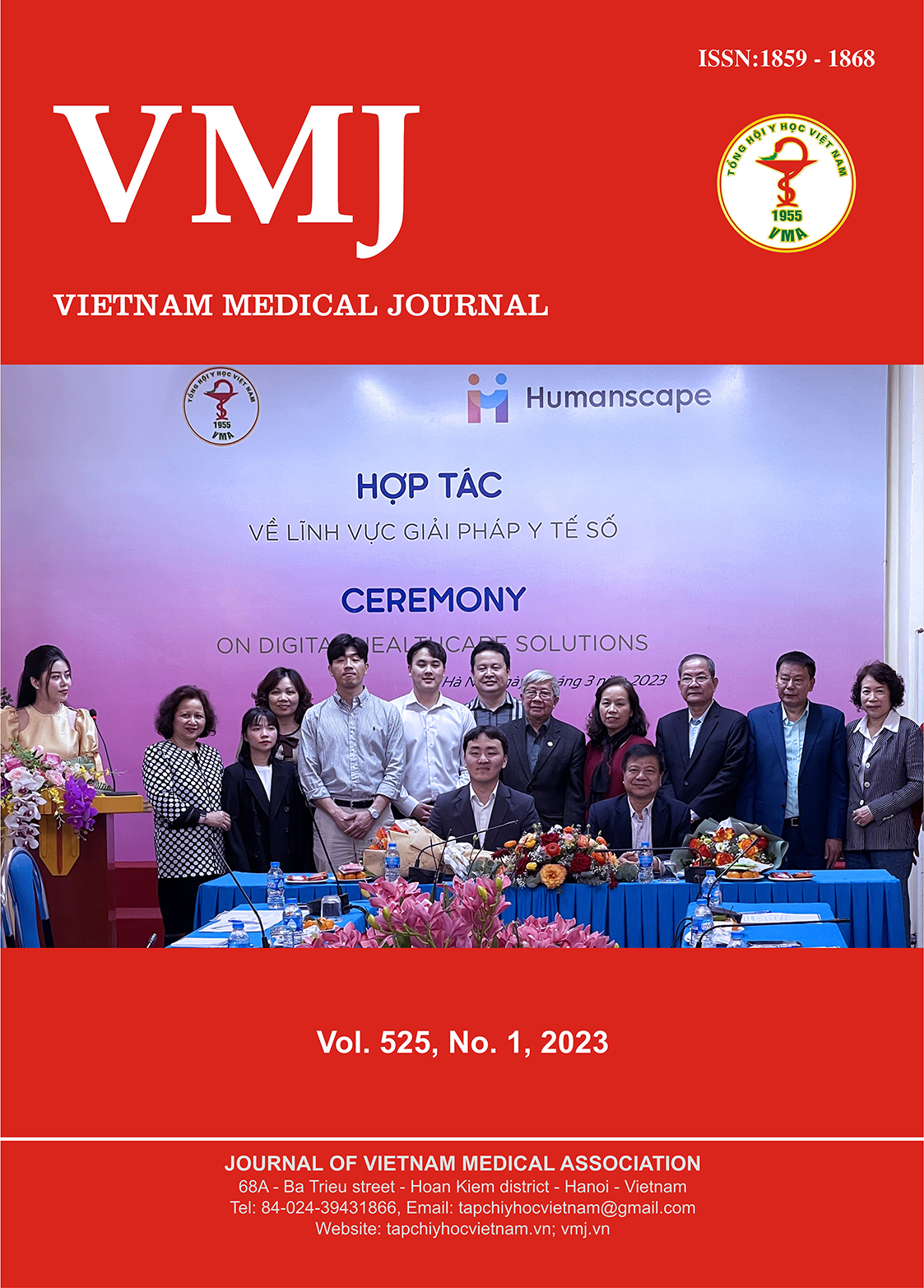ANTIMICROBIAL SUSCEPTIBILITY PATTERNS OF ESCHERICHIA COLI ISOLATED FROM CANCER PATIENTS IN NATIONAL CANCER HOSPITAL
Nội dung chính của bài viết
Tóm tắt
Introduction: Escherichia coli (E. coli) is one of the leading causes of infections in cancer patients. Antibiotic-resistant E. coli is a major cause of treatment failure in infected cancer patients. This study aims to determine the prevalence and antibiotic susceptibility of E. coli in cancer patients from January 2022 to December 2022 at National Cancer Hospital. Materials and methods: We performed a retrospective review of the culture results of various clinical samples. Results: A total of 283 samples were analyzed to identify E. coli and its antimicrobial profiles. The prevalence of E. coli was 15.9%. The highest isolation rate was obtained from blood samples (35.56%). The highest rate of E. coli resistance was found in ampicillin (95.56%), followed by sulfamethoxazole/trimethoprim (77.76%) and ceftazidime (64.44%). The highest rate of E. coli sensitivity was found in fosfomycin (97.78%), followed by ertapenem, imipenem, meropenem, and amikacin (95.56% each), and nitrofurantoin (93.33%). About 55.56% and 80.0% were ESBL-positive and multidrug-resistant, respectively. Conclusion: E. coli isolates showed high rates of resistance to ampicillin, sulfamethoxazole/ trimethoprim, and ceftazidime. Fosfomycin, ertapenem, imipenem, meropenem, amikacin, and nitrofurantoin are considered appropriate for the empirical treatment of E. coli. Regular monitoring of E. coli resistant to antibiotics is recommended.
Chi tiết bài viết
Từ khóa
E. coli, antibiotics, Burns, cancer, Vietnam
Tài liệu tham khảo
2. Wu D, Ding Y, Yao K, Gao W, Wang Y. Antimicrobial Resistance Analysis of Clinical Escherichia coli Isolates in Neonatal Ward. Frontiers in pediatrics. 2021;9:670470.
3. Fentie A, Wondimeneh Y, Balcha A, Amsalu A, Adankie BT. Bacterial profile, antibiotic resistance pattern and associated factors among cancer patients at University of Gondar Hospital, Northwest Ethiopia. Infection and drug resistance. 2018;11:2169-78.
4. Sherchan JB, Hayakawa K, Miyoshi-Akiyama T, Ohmagari N, Kirikae T, Nagamatsu M, et al. Clinical epidemiology and molecular analysis of extended-spectrum-beta-lactamase-producing Escherichia coli in Nepal: characteristics of sequence types 131 and 648. Antimicrobial agents and chemotherapy. 2015;59(6):3424-32.
5. Shlaes DM, Sahm D, Opiela C, Spellberg B. The FDA reboot of antibiotic development. Antimicrobial agents and chemotherapy. 2013;57(10):4605-7.
6. Bhat S, Muthunatarajan S, Mulki SS, Archana Bhat K, Kotian KH. Bacterial Infection among Cancer Patients: Analysis of Isolates and Antibiotic Sensitivity Pattern. International journal of microbiology. 2021;2021:8883700.
7. Bow EJ. Fluoroquinolones, antimicrobial resistance and neutropenic cancer patients. Current opinion in infectious diseases. 2011;24(6):545-53.
8. Tanwar J, Das S, Fatima Z, Hameed S. Multidrug resistance: an emerging crisis. Interdisciplinary perspectives on infectious diseases. 2014;2014:541340.


